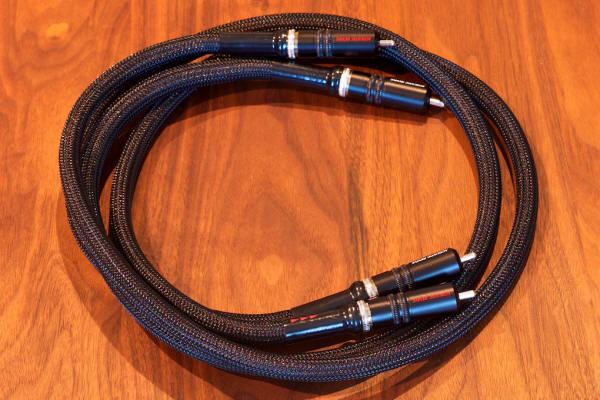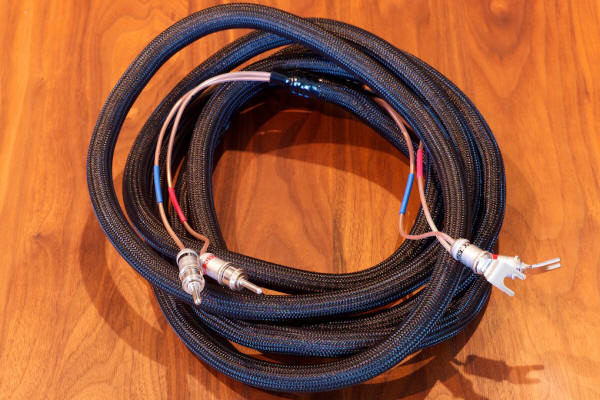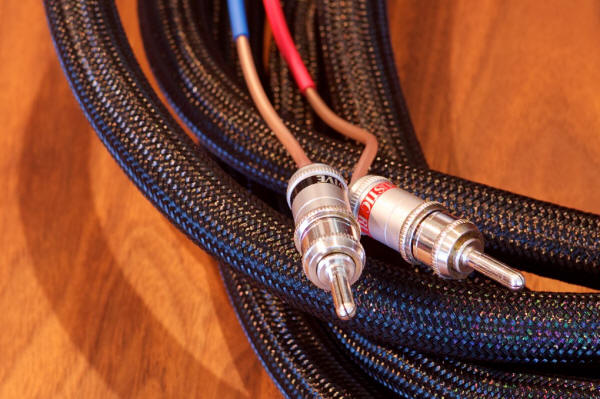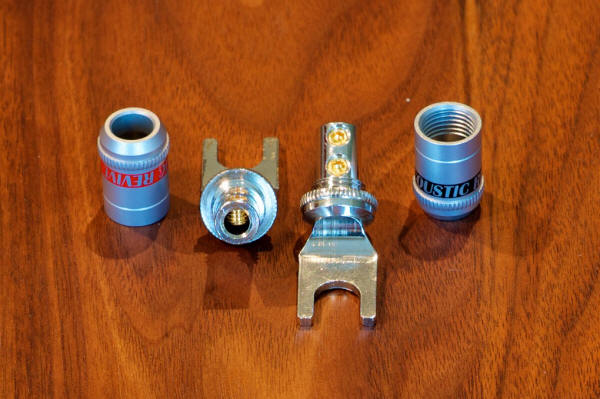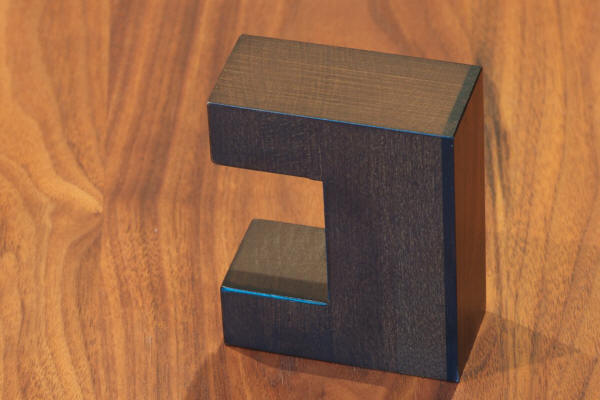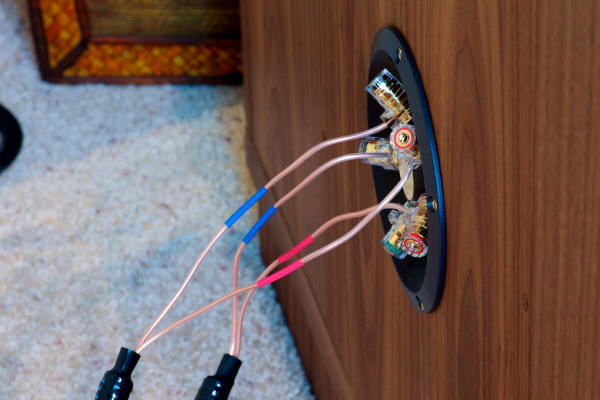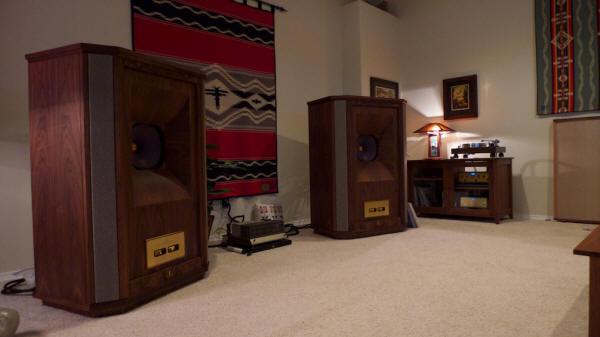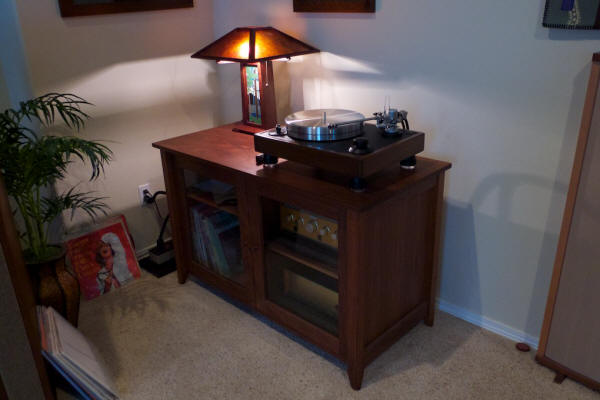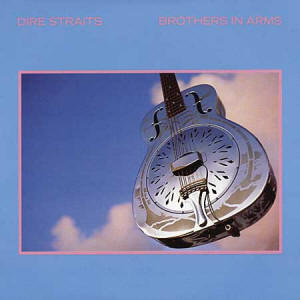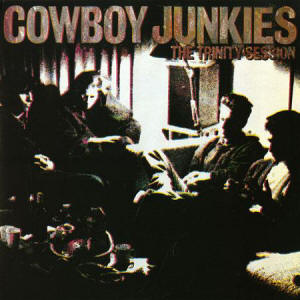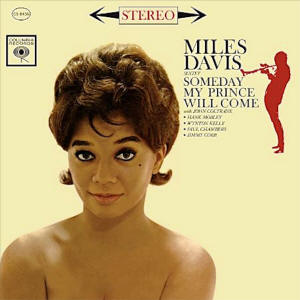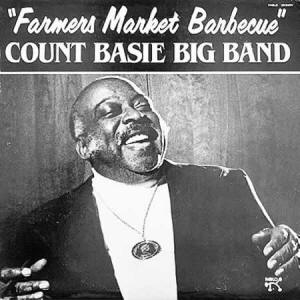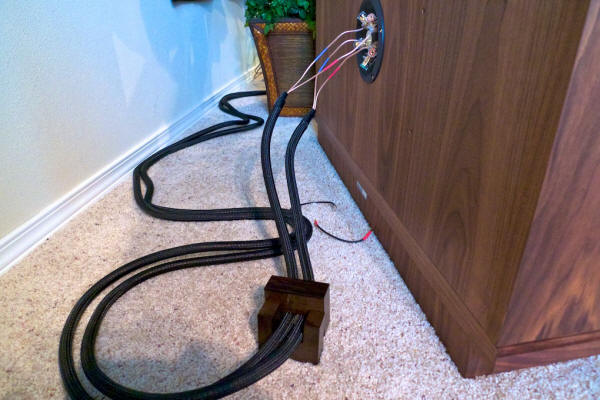|
You are reading the older HTML site Positive Feedback ISSUE 49may/june 2010
The Acoustic Revive Chronicles - Chapter 8: The Acoustic Revive Single Core speaker cables, RCA
interconnects, and the RCI-3 Cable Insulators
"Much can be realized with music if one begins playing in unison, then goes on to improvise with purity of tone, distinctness, and flow, thereby bringing all to completion," Confucius, 551 – 479 BCE. I've been reading through one of the classics of ancient China, The Analects of Confucius, and I ran across Confucius' above statement about music. I marveled at how Confucius' 2500 year old statement so accurately characterizes my primary musical interest, jazz, which is all about improvisation, tone, and a distinct but recognizable take on a jazz standard. Jazz is all about the flow of the chordal structure and the interaction of alternating melodic improvisation by the musicians as they take turns displaying their virtuosity and creativity—this interplay is what makes jazz complete as a musical style, just like Confucius said. It also struck me how relevant Confucius' statement is to the performance of the Acoustic Revive Single Core speaker cables and RCA interconnects that I have been listening to in my system. I am getting ahead of myself though, so I should backup for a moment for those who are new to The Acoustic Revive Chronicles and explain how this series of articles came about. Back in late 2007 Yoshi Hontani, the exporter of the beautiful and musical Leben Hi-Fi Company valve gear from Japan, told me that he was very impressed with the Acoustic Revive system and room tuning accessories, and had decided to start exporting them too, and wanted to know if I would like to listen to a couple of their products in my own system. I pay close attention to what Yoshi-San says, because he has exquisite taste in picking Hi-Fi gear that maximizes the musical experience. So when Yoshi-San asked me if I'd like to check out a couple of Acoustic Revive products, knowing they had impressed Yoshi-San, I immediately said, "Yes!" Three big boxes of Acoustic Revive products arrived at my front door instead of the couple of little-bitty boxes I was expecting, and after unpacking everything, I was even more surprised at the number of Acoustic Revive room and system tuning devices that were laid out in front of me. I knew there was no way I could do justice to all of the Acoustic Revive products provided for review in a single article, so I divided them up in groups and began working through them as a series of articles over time, and thus The Acoustic Revive Chronicles were born. Chapter 1 appeared in February 2008 and I have been steadily working through writing articles about Acoustic Revive products for over two years, and I have just now finally come to the last group—nine articles in total! I think that has to be some kind of record in audio writing for a single product line, and if not, well it is certainly a record for me! You can find links to all of the chapters of The Acoustic Revive Chronicles at my personal blog here. Those who have been following my writing over the years know that I have adopted a policy of not wasting my time writing about things that I don't think are wonderful and can whole-heartedly recommend to like-minded listeners. As much as anything I could write, the fact that I have written nine articles about the Acoustic Revive products ought to tell you how highly I regard them and how comfortable I feel recommending them to you. If anything, over time I have come to appreciate the Acoustic Revive products more and more, which is probably the strongest recommendation I could make about any Hi-Fi product. I mean how many Hi-Fi products have you ever had in your system that you continue to be impressed with over the years? If you're like most Hi-Fi enthusiasts your list is not a long one. The Acoustic Revive Single Core RCA Interconnects and Speaker Cables Those original boxes of Acoustic Revive accessories that had arrived included a pair of 1-meter Single Core RCA interconnects. I was impressed enough with them that after I had worked through all of the other Acoustic Revive products, I asked Yoshi-San if it would be possible to arrange for a review of a full system set of Single Core speaker cables and interconnects. Fortunately for me, and you dear readers, Yoshi-San said yes, and a set was dispatched to me for evaluation.
Like all Acoustic Revive products, a great deal of thought, careful listening, and the very best materials available have gone into its flagship Single Core line of interconnects, speaker cables, and power cords (I've already reviewed the Power Reference power cords, and the outcome of experiencing their incredible level of performance was that they now connect every component in my big system to the AC). I'm only going to provide a summary level description of construction and design philosophy for the Single Core RCA interconnects and speaker cables, but for those who are interested in more detail, there's a wealth of information about the Single Core series of interconnects, speaker cables, and power cords at the Acoustic Revive website. Let's first talk about the conductors used in the Single Core series, which Acoustic Revive says has to be a single conductor to get the best performance. Essentially, Acoustic Revive's position is that electric current radiative effects emanating from multiple conductors introduces subtle distortion of the signal that degrades performance compared to what is possible with a single conductor. The conductors are oval Pure Copper by Ohno Continuous Casting (PCOCC-A) wire. The PCOCC-A is an ultra-high purity (greater than 8-Nines, or 99.999999%) single-crystal copper wire that has been annealed—the 'A' in PCOCC-A—to increase its pliability and conductivity. 6-Nines or less is what you see in almost all other cables, and Acoustic Revive tells me the measurable and audible difference between the performance of 6-Nines conductors and their 8-Nines conductors is profound, and well worth the extra effort and expense involved in producing them. Acoustic Revive also makes a point of saying that the oval shape of their PCOCC-A conductors means they do not have a resonance point, which contributes to a smoother, more transparent, three-dimensional, and articulate sound compared to other kinds of conductors. The PCOCC-A conductors are covered with a natural silk dielectric, which Acoustic Revive says gives a more natural and spacious feel to the music. The silk covered PCOCC-A conductors are then covered with Teflon coated flexible copper tubing that provides 100% shielding from RFI. Acoustic Revive then covers the entire cable assembly with mesh polyurethane tubing containing embedded carbon particles that provides additional shielding and vibration isolation.
Acoustic Revive interconnects and speaker cables are terminated with solderless connectors that are works of art all by themselves, looking more like they are produced by a maker of fine jewelry, say Tiffany, than an audio company, and whose materials qualities are the equal of the PCOCC-A conductors. Acoustic Revive doesn't believe in using soldered connections because a solder joint between the conductor and connecter "solder reduces conductivity and sound quality".
Acoustic Revive's flagship Single Core series of cables are constructed entirely by hand, and given the ultra-quality of the materials, and the fanatical attention paid to quality of construction, it should come as no surprise that they are expensive. If you're trying to save money in these difficult economic times, I'd say you might want to look elsewhere. However, if you're not troubled by their cost, and are looking for exceptional sonic and musical performance in an ultra-quality product, then please keep reading.
Acoustic Revive RCI-3 Cable Insulators I've never been keen on cable lifts, as I've never heard them make an audible difference in my Hi-Fi rig, but others say they have, so I try to be open minded. Before I read up on the RCI-3 Cable Insulators I just assumed that they were fancy versions of typical cable lifts whose purpose was to lift loudspeaker cables up off of the floor or carpet to help isolate them from static electricity and vibrations emanating from the floor surface, the typical claim for cable lifts.
Yet it turns out that I couldn't have been more wrong about the purpose of the RCI-3s. It turns out that the idea behind the RCI-3 Cable insulators is more akin to the principles of the CB-1DB Receptacle Base Plate, the CFRP-1F Carbon Fiber Outlet Plate, and the CS-F2 Outlet Stabilizer that I wrote about in Chapter 6, whose goal is to reduce a major vibrational pathway that most of us (well at least me, anyways) have never even realized existed: the vibration pathway from the 60Hz cycling of AC in the power grid through the AC mains connection that goes directly into each component plugged into it. I didn't really expect to hear any difference at all with the CB-1DB Receptacle Base Plate, the CFRP-1F Carbon Fiber Outlet Plate, and the CS-F2 Outlet Stabilizer installed into my outlet, yet it turned out to be a fairly big deal and an easily audible improvement.
So the purpose of the RCI-3 Cable Insulators is not to isolate speaker cables from the floor, but to reduce the transmission of loudspeaker vibration to the cables, which Acoustic Revive says degrades performance. Here's the description from the Acoustic Revive website:
Honestly, vibration from the loudspeaker itself on the performance of speaker cables is something that has never occurred to me as being any kind of a factor, so I did a little test to see if I could feel any vibration being transmitted to the speaker cables from my Westminster Royals. I put an LP on the turntable, set the volume on the Leben preamp to a normal listening level, then walked around the back of my Westminster Royal loudspeakers and placed my hand on their cabinets, and I could definitely feel vibration on the cabinet backs. Then I placed my hand on the binding posts for the speaker cables, and sure enough, I could feel vibration there too. Then I grabbed hold of the speaker cables themselves, and I could definitely feel them vibrating (albeit diminishing as I moved my hand further down the cables). I found the amount of vibration transmitted from the speaker to the speaker cables to be quite a lot larger than I would have expected, and something that I had never noticed before. The fact that the speaker makes the cables vibrate seems obvious when you think about it, as that is exactly what happens with the guitar strings on my guitars when vibrated by their bodies when sitting in the listening room when the stereo is playing. If I walk over to one of my guitars while the stereo is playing and place my hand on the body, then the strings, it's pretty obvious that vibration of the body makes the strings vibrate, so it's no surprise that the speaker 'strings' vibrate too. System and Setup
The current system configuration for this review is described in detail at my blog, but essentially consists of a VPI Classic turntable and arm with a Clearaudio Virtuoso Wood cartridge, a Leben RS30EQ phono equalizer plus Leben RS100U line preamplifier, a Leben CS660P power amplifier, Tannoy Westminster Royal SE loudspeakers, and many of the Acoustic Revive accessories from previous reviews in the Acoustic Revive Chronicles series of reviews.
Up until the arrival of the Acoustic Revive Single Core speaker cables I had been quite contentedly using the Audio Tekne speaker cables and interconnects in my primary system, which then had Harbeth Monitor 40.1 loudspeakers in it instead of the Tannoy Westminster Royal SEs that reside here now. As Murphy's Law would have it, in making arrangements for a complete set of speaker cables and interconnects for this review, there was a mix-up in communication between Acoustic Revive and myself about which version of the Harbeth Monitor 40s I had, and I was sent a tri-wire set for the previous version which had three sets of binding posts, instead of a single-wire set for the single pair of binding posts that the new version uses. Acoustic Revive defeated Murphy, however, because the solderless connector design of their speaker cables allowed me to decouple two cables of the tri-wire set with a simple turn of an Allen wrench to create both single-wire and bi-wire sets from it. So now I was ready to go with a single-wire set of speaker cables with the Harbeth Monitor 40.1 loudspeakers when something totally unexpected came about: In a wild-hare moment I bought the aforementioned Tannoy Westminster Royal SE loudspeakers that I had long admired to replace my Harbeth Monitor 40.1 loudspeakers. The Tannoy's have bi-wire binding posts for the Dual Concentric™ driver, so once again Murphy was defeated by Acoustic Revive's clever solderless connector design and I was able to use the bi-wire set of cables derived from the tri-wire set. So one aspect of the Acoustic Revive speaker cable design that might not have dawned on me had this sequence of events not occurred, was that because of the solderless connector design of the Acoustic Revive speaker cable, your investment is protected even when changing between loudspeakers with differing numbers of binding posts, as you can easily add or subtract speaker cables at will to match the number of binding posts for whatever speaker you are using—that's a really big plus, especially for us reviewer types who have speakers with varying numbers of binding posts coming through at regular intervals. One other unexpected thing happened: Changing from the Harbeths to the behemoth Tannoys meant that there was no longer room between the loudspeakers for the equipment cabinet, which had to be relocated quite a distance away on the right sidewall. So now instead of spanning the distance between my preamplifier and power amplifier with the nice short 1-meter set of Acoustic Revive RCA interconnects I was sent, the distance was now more like 20 feet from preamplifier to amplifier. Honestly, I felt too embarrassed about all the ensuing cable turmoil that had occurred while playing loudspeaker musical chairs, not to mention the resulting months of delays, to ask Acoustic Revive if they would mind sending me a Single Core RCA interconnect that was 20 feet long. So instead I used a 20 feet long TEAD RCA interconnect that I had stashed away in a closet, which was probably a mistake, because it's not even close to being in the same league as the Acoustic Revive interconnects, and may have compromised somewhat the full system performance I would have realized using a full set of Acoustic Revive speaker cables and interconnects. So for this review I ending up using a bi-wire set of Acoustic Revive Single Core speaker cables on the Tannoys, a set of 1-meter Acoustic Revive Single Core RCA interconnects from my VPI Classic turntable to the Leben RS30EQ phono equalizer, and a 1-meter set of Acoustic Revive Single Core RCA interconnects to the Leben RS100U line preamplifier. I used the aforementioned TEAD RCA interconnect between the Leben RS100U preamplifier and my Leben CS660P power amplifier. Finally, I positioned the RCI-3 Cable Insulators right under where the Single Core speaker cables would have first touched the ground behind the loudspeakers, as recommended by Acoustic Revive. Before I forget, let me mention a rather remarkable little device called the FryBaby, made by Hagerman Audio Labs, a $249 cable and audio electronics burn-in generator, which my friend Stephaen let me use to break-in/condition all my cables prior to the review, as well as the Acoustic Revive Single Core cables. Let me tell you this, regardless of how much time you have on your cables, if you've never conditioned them with a FryBaby you have no idea how good your cables can sound. The improvement between cables conditioned with the FryBaby and those that are not is profound. Let me say it again—profound. My friends, the FryBaby is a product every Hi-Fi nut should have in their collection, regardless of the price of their cables—consider me wowed. Ok, on to a little music listening. Listening Impressions I've been rotating the Single Core speaker cables and RCA interconnects through three different Hi-Fi rigs for months now (review systems 1 - 3, the details of which you can see at my blog), so I've got a pretty good handle on how they perform in a variety of contexts. What I've found is that their performance is consistent across a fairly wide variety of gear, which is good if you have gear revolving in and out of your system over time, because you're not going to have any surprises on the compatibility front, which protects your investment in the Single Core cables for the long haul. In describing the performance of the Single Cores during this review I'm referring to my 'big' analogue system as described above, which I like better than any Hi-Fi rig I've heard anywhere, ever. If any Hi-Fi system allows the Single Cores to display what they're capable of both musically and sonically, it's this system. First I'll give you a general overview of the Single Core's performance, and then I'll delve into some specific music examples for you to round things out. I can sum up the Single Core speaker cables and RCA interconnects in two words: relaxed clarity. I don't think I've ever run across cables that offer such a deep and clear view into the fabric of the music, and yet they sound very relaxed and natural, without even a hint of analytical edge. One benefit of this relaxed clarity was that I could crank the music up to live levels without having my ears shut down, to a much greater extent than other cable sets I've owned or heard. Even if you'd rather listen at lower volumes you'll still hear everything, so it's the best of both worlds volume wise.
So what does that mean? It means that the Single Core cables provide an intoxicating combination of musical and sonic attributes that allows the music to bloom with lots of natural detail. Take the 180-gram Dire Straits Brothers In Arms LP that was half-speed mastered by Stan Ricker as an example: the Single Core cables allowed the beauty of the musical overtones to fully develop, which resulted in stunning tone color, and a very high degree of timbral realism for the instruments on the recording. The Single Core cables also gave me a strong tactile sense for what the musicians were doing on their instruments, the dynamic touch of Knopfler's picks and fingers on strings, the smack of Williams' sticks on drumheads or cymbals, or fingers caressing keyboards, all of which lends a lot of excitement and emotive impact to the music. The result of having the Single Core cables in my system was that it yielded an excitingly live but non- 'electronic' presentation of sound for the Brothers in Arms album. The upside of that was that I didn't think about the superb sonics coming through the loudspeakers per se, rather I was pulled into the music's emotive essence because the presentation was so captivatingly dramatic. On the song Brothers in Arms the drama astonished me, portrayed with a brooding dark intensity like rolling thunder, the tension of waiting in darkness, the guitar riffs evocative of gunfire in their intensity. It put me in quite a reflect-ful mood, on this day, the USA's Memorial Day. I was really struck with emotion as the lyrics closed out the song with "Let me bid you farewell, every man has to die, but it's written in the starlight, and every line on your palm, that we're fools to make war, on our brothers in arms," being reminded of family and friends who were cut to the bone, both in body and soul, through the tribulations of war. I can't think of any higher praise for a product than the fact that it allows you to immerse yourself in the meaning of the music, and that the Single Core cables accomplished in spades. It took me a bit to regroup enough after listening to the title track Brothers in Arms, and to settle down enough to focus on describing the sonics, as I really was quite unprepared for the emotional impact the song would have on me. Not only is the album Brothers in Arms amazing on a musical level, the recording quality is also superb, making it a nice sonic evaluator too. One thing that was immediately apparent was that the Single Core cables offered incredible transparency, and provided me a clear window to 'see' very deep into the fabric of the recording, which really makes Brothers in Arms come alive with all kinds of little musical details, overtones, the decay of notes, the shimmer of cymbals, a taut and textured driving bass line—it was all there. The Single Core cables are even more transparent than the excellent Audi Tekne cable set I have been using for a couple of years, yet even smoother and easier on the ears, for example. The Single Core cables are also more even top-to-bottom than the Audio Tekne cables, which tend to be a little brighter in the high frequencies and somewhat edgier, which can make the opening guitar lick in Money for Nothing a bit too aggressive for me, not to an unpleasant extent, but enough so that I lost touch with the music as my ears scrunched down in reaction to it. The Single Cores nail the same guitar lick perfectly, providing the feel of a guitar being pushed into distortion, but without any unnatural edge. The real world difference that makes was this: the guitar riff made me cringe a bit with the Audio Tekne and think about the sound, with the Single Core doing duties I wanted to jump up out of my seat and dance to the music. Oh yeah, that's a big real world difference. The Audio Tekne was also more exaggerated in the bass than the Single Cores. You might not notice that the bass is a little overblown with the Audio Tekne cables with many speakers, but with my Westminsters going down to 18 hertz it was readily apparent. While I'm on the topic of overblown bass, one of the other cables sets that I'm most fond of is Cardas Golden Cross, which also has bass that is a bit overblown with speakers that are capable of really deep bass extension. Both the Cardas and the Audio Tekne use a Litz style of conductor, so I can't help but wonder if it isn't related to that. Listen to the bass and the bass drum in the opening cut on side one, So Far Away, which through the Single Cores is tight, resolved, dynamic, and not the least bit overblown—it's pure bass perfection. Lots of detail is recovered via the Single Core cables, but they are not the least bit analytical sounding, and the amount of detail presented is harmonious with what you really hear with instruments and voices in life, so it doesn't pop that bubble of musical illusion that makes recordings sound electronic and fake. On Brothers In Arms the way detail is presented really works hand-in-hand with another of the Single Cores' strengths: to throw a huge soundstage in width, height and depth, and I mean huge. With Brothers it seemed like the soundstage went all the way back into infinity with many layers of instruments, and wrapped around me in a 180 degree panorama while filling up my room with nice solid believable images of instruments and vocalists.
Another thing that the Single Cores excelled at was producing a huge billowing sense of ambient space that completely filled my room in a totally immersive experience. While listening to the Cowboy Junkies' The Trinity Sessions the acoustic 'space' of the Trinity Church where they recorded the album filled up my living room to make for a beautiful and haunting experience. Hearing the Junkies' The Trinity Sessions on my big rig it's easy to understand how people in a church could be moved to rapturous experiences in the presence of beautiful music, and that's pretty much what happened to me during my listening sessions with the Single Cores - The Trinity Sessions was an experience to be relished. On the musical content side of things, the Single Core cables provide a high level of timbral realism at the band level, believably capturing a band's 'signature sound' without skewing it unnaturally. You'll never be going "Who was that? It kind of sounds like such and such," because you'll know who it is immediately, "Hey that's Crosby, Stills, and Nash singing Blackbird, not the Beatles—I'd recognize those voices anywhere!" Also, the timbre, the unique 'voices' of instruments, are preserved and believably portrayed. Just listen to the Junkies' Michael and John Timmins' guitars; Jeff Bird's fiddle, mandolin, and harmonica; or Kim Deschamps' pedal steel guitar, dobro, or bottleneck slide guitar—the timbre of the instruments just wowed me through the Single Cores. That sort of believable timbral reproduction really helps the illusion of live music along, and it helps me to completely lose track that I'm really just listening to a great record after all.
Brass sounds, well brassy, and completely seductive and believable. Miles Davis' lip vibrated trumpet sounded totally horny on the excellent 45-RPM Acoustic Sounds pressing of Someday My Prince Will Come (that's Miles' lovely first wife, Frances, on the album cover). The Count Basie Big Band album Farmers Market Barbeque test pressing I have is an absolute feast for the ears both musically and sonically, and the tone color of the instruments is presented as so ravishingly beautiful with Single Cores, with cymbals having a natural shimmer and long decay like you hear in life, massed horns were powerfully rich sounding, and muted trumpets, and piano, and everything else, made it feel like I was sitting in with the band.
I've never heard my Tannoy Westminster Royal SEs loudspeakers sound as totally amazing as they do with these Single Core cables connected to them, it's an amazing experience that has just mesmerized me and broadened my appreciation for what is possible in Hi-Fi, both sonically and musically. On Farmers one of the things that really impressed me about the Single Cores was how well they presented the motional elements of music. The melody (that tune you 'whistle while you work') was so captivatingly realistic as the different musicians took their turns soloing, and the way the Big Band harmonized (treble and bass accompaniments to the melody) the melody was almost indescribably artful and adds immensely to the textures and tones of a jazz piece. The rhythm (that steady beat that determines the tempo) really comes through with the Single Cores in the system, and Count Basie's signature rhythmic sophistication is fully apparent. You really understand what they're getting at on the Acoustic Sounds website about the album when they say, "Count Basie had a secret: How to make a collection of instrumentalists generate rhythmic thrust so irresistible that no listener's foot could remain motionless." The dynamics (variations in loudness) are evocative of that which I hear in life, and the Single Cores positively make my Westminster Royals become living and breathing dynamic dynamos, both with extreme dynamics as with big drum hits on Farmers Market Barbeque, but also with dynamics on the softer end of the scale. The Single Cores gave me a strong emotional connection to the melody and rhythm because of their dynamic prowess, and particularly in complex music like that of Basie's Big Band, where there are so many artful things happening dynamically from the different musicians, and it matters that this dynamic virtuosity makes it through unscathed. Ok, I've rattled on about the Single Core cables far too long, but they are so ridiculously good it's a little hard not to. But let me shift gears a little now and talk about the Acoustic Revive RCI-3 Cable Insulators. The guys at Acoustic Revive sent me five of the RCI-3s to try, and my results with them were somewhat mixed. When I placed one under the speaker cables on each side at the first point where they would have touched the floor I heard zero change. What's interesting was that if I held the speaker cable in my hand right before the RCI-3, and then right after it, there was a noticeable difference in the amount of vibration I could feel in the cable, so the RCI-3 was reducing the vibration in the cable noticeably. The only thing was that I couldn't hear any difference in the music from its influence in my system. So I added a second set of RCI-3s down the cable a ways from the first set with the same result of vibration being reduced in the cable, but I still couldn't hear any audible difference in performance. I know that Ken San has experienced good results with the RCI-3s in his systems, so I'm not sure why I didn't.
But I decided to try a little unauthorized experiment: instead of just putting an RCI-3 underneath the cable on each side and another set a little further downstream under the cable, I took the second set and put them immediately behind the first set, except not under the cable, but on top of it forming a kind of gravity clamp on the cable. That was a little too unstable though, so I took the quartz crystals used in an Acoustic Revive Quartz Under-Board and divided it equally into two quart sized Zip-Lock freezer bags, and plopped the bags down on top of the RCI-3 'clamp' I had created. That did the trick, and I began to get an appreciation for the difference that controlling vibration transmitted from the speaker to the speaker cable can make: everything just sounded cleaner, more effortless, less electronic, and more natural. It was definitely a noticeable and desirable change in sonics, but somewhat less in magnitude than the Acoustic Revive RR-77 Pulse Generator makes, to give you an idea of what to expect. So while I'm now convinced that controlling the vibration in the speaker to speaker cable interface is for real and worthwhile, I'm still a little ambivalent about recommending the RCI-3s as I'm not sure many people would want to invest in multiple RCI-3s and a Quartz Under-Board to try and reproduce my little experiment. I can't help but wonder if there isn't a better way to accomplish the same goal, but to do it directly at the interface of the speaker's binding posts and the speaker cable, like CB-1DB Receptacle Base Plate and CFRP-1F Carbon Fiber Outlet Plate does for an AC mains connection. Wrapping Up I started out this article by saying a quote from Confucius (551 – 479 BCE) was reminded me of the Acoustic Revive Single Core cables: "Much can be realized with music if one begins playing in unison, and then goes on to improvise with purity of tone and distinctness and flow, thereby bringing all to completion." The Single Core cables really brought everything together in my system, and "much was realized" through their use, with their relaxed clarity giving a purity of tone and sheer musicality that is unparalleled for my system, which frankly was sounding pretty darn good already. The difference was not subtle, it was transformative—it was HUGE. The Acoustic Revive Single Core are the finest set of cables I've ever had the pleasure of listening to in my system, and you should interpret this as a rave review lauding their virtues. The Single Cores are very good at portraying the sonics captured during the recording process, but more importantly they are simply outstanding at portraying the musical content of a recording and turning it into an astonishingly pleasing musical experience—they receive my highest recommendation. As I mentioned above, I'm now convinced that controlling vibration in the speaker-to-speaker cable interface is for real and worthwhile, but I'm ambivalent about recommending the RCI-3s because I'm don't feel like they are a fully realized product yet. What I'd really like to see is Ken San come up with a solution that inserts between the speaker binding posts and the speaker cable, as I think it would yield an even larger (and more reproducible) improvement. But don't let me stop you from trying to reproduce the little experiment that I did if you want to do it—it does work. This Chapter of the Acoustic Revive Chronicles brings to a conclusion all of the items I have in-house from Acoustic Revive to write about, and it has been a fun and eye opening journey. I have been impressed by the enormous improvement in my system's performance that the Acoustic Revive products have provided, both individually, and as an additive whole. The Acoustic Revive products really improve the musical attributes of recordings like timbre, meter, tonality, harmony, beat, tempo, syncopation, and melody—all of which became more convincingly natural and life-like. The overall effect has been make music through my Hi-Fi rig more dramatic, bigger, more exciting, and more entertaining—more like you experience in life—more naturally life-like. I found that the sonic attributes as well: things like soundstaging, imaging, transparency, perspective, and the sense of recorded space all became more tangible and vivid. The Acoustic Revive products provide a very nice balance of providing a big dose of improving the musical attributes, with an appropriately sized addition of sonic improvements that enhances the music, with the net effect being that I'm drawn deeper into the musical experience during listening sessions. So all-in-all, the Acoustic Revive products have been winners in my home audio system, and they have gotten me magically close to Ken-San's (and my own) goal of a home audio system that "sounds natural and not as though it is being played back over an electrical device." I would like to offer my sincerest thanks to Mr. Ken Ishiguro, the owner and visionary designer of Acoustic Revive, and Mr. Yoshi Hontani, the exporter of Acoustic Revive products, for giving me and the readers of Positive Feedback Online an opportunity to experience such a vast array of products—it was a real eye opener, and a tremendous amount of fun. Pricing: The Acoustic Revive Single Core speaker cables are $1800 US for a terminated 2-meter pair, the Single Core RCA interconnects are $1275 US for a 1-meter pair, and the RCI-3 cable insulators are $175 US each. Quality of construction: Like all Acoustic Revive products, the Single Core cables and RCI-3 cable insulators are all built to astonishingly high standards. Condition of products received: Perfect. Human interactions: Mr. Yoshi Hontani (Acoustic Revive exporter) is the best person to work with I can imagine. He is expedient, courteous and helpful. The same goes for Mr. Ken Ishiguro of Acoustic Revive fame, and US importer Mr. Joe Cohen of the Lotus Group. A class act all the way around! Acoustic Revive website: www.acoustic-revive.com/english/index.html US importer's website: www.lotusgroupusa.com
|

